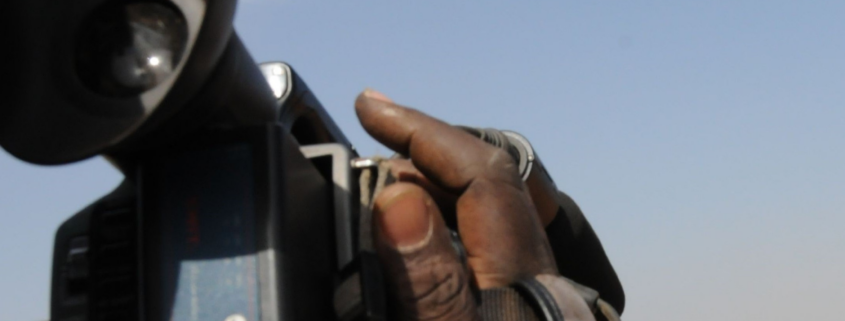This blog by Sean McGovern and Abraham Diing Akoi, is based on a recently published research report on social media and violence. The blog explores the intersection between the use of social media, including WhatsApp, in times of conflict and violence. Using the case of South Sudan, the blog identifies how communities have used WhatsApp in both positive and negative ways during conflict. The blog provides some recommendations on how to mitigate the detrimental effects…
repository
CSRF Research Repository
The CSRF Research Repository aims to support greater contextual knowledge for policy makers, programme managers, and implementers by providing a searchable repository of research, analysis, and resources, and providing periodic updates on new research and analysis.
This report offers a consolidated account of MSF’s experience in South Sudan since 9 July 2011. In so doing, it seeks to serve as a record and reminder of the human toll of violence, since independence, as seen by MSF – through its staff and patients. It is based on interviews with more than 100 of MSF’s South Sudanese staff, operational research, internal reports, and public communications over the last decade. It also draws on…
The Safeguarding Health in Conflict Coalition (SHCC) identified 18 incidents of violence against or obstruction of health care in South Sudan in 2020, compared to three such incidents in 2019. The violence affected mainly health workers working for local and INGO health providers. The increasing number of incidents are claimed to stem from mounting local violence and ongoing conflict that resulted in clashes between opposing forces during which health workers were injured or killed. Download
South Sudan is in a state of profound economic transition, heavily influenced by conflict and large-scale population displacement and return. This transition has fundamentally changed the way in which people live, particularly their relationship with work and money. Young people, particularly women, have generally suffered disproportionately as they try to navigate this rapidly changing and often exploitative political economy. This report summarizes these broader trends and outlines how young men often have little option but…
Abstract This article explores the links between African artefacts in European museum collections and the slave and ivory trade in Sudan in the nineteenth century. It examines how ‘ethnographic’ collections were acquired from southern Sudan and how this process was entangled with the expansion of predatory commerce. Presenting evidence from contemporary travel accounts, museum archives and from the examination of objects themselves, the author argues that the nineteenth-century trade in artefacts from South Sudan was…
Sudanese, South Sudanese, and African refugee communities in Cairo, Egypt have raised the issue of gang violence as a major concern for their communities for over a decade. Despite the damaging effects violence has on refugee communities, humanitarian organizations in Cairo have only launched a limited number of interventions to address gang violence due its complicated and sensitive nature. This report analyzes Sudanese and South Sudanese gang violence, focusing on how conceptions of masculinity reproduce…
This longitudinal study explores the place of the civilian populations in the wars of what is now South Sudan. Using a broad range of empirical evidence, the authors trace the evolution of conflict practices and norms from the 1800s to today. Two main insights stand out: First, since the initial colonial incursions, local residents have been strategic assets to be managed and exploited, and thus populations are not just legitimate targets in conflicts but also…
The inability of the African Union (AU) to deal with increasing outbreaks of violence and conflict has cast a lot of doubt regarding the organization’s ability to lead Africa in a 21st century characterized by massive geopolitical dynamics. To answer the critical question of whether the AU is still relevant today, the study employed a strict textual analysis of the relevant literature on the role of the AU in conflict prevention, eradication, and by extension…
Peace agreements can be turning points in complex transitions from war to peace. But they don’t necessarily lead to greater stability, let alone peace. This report explores trajectories of violence in Sudan and South Sudan after the signature of peace agreements. It traces violence trajectories and explores whether these peace agreements resolved, reshaped or perpetuated existing patterns of violence. Download
According to the United Nations (UN), 357 million children live in areas affected by armed conflict, and that number has risen dramatically over the past ten years. Children are disproportionately affected by war – including facing increased risk of all forms of violence and exploitation – yet are the least responsible. The recruitment and use of children are grave violations of children’s rights, with lifelong effects on children and their communities. And yet tens of…

Some Infos
Lorem ipsum dolor sit amet, consectetuer adipiscing elit. Aenean commodo ligula eget dolor.
Pages
- About Our County Profiles
- Blog
- Case Studies Grid
- Central Equatoria
- Conflict Sensitivity Resource Facility South Sudan
- Contact Us
- Contribute a Repository Article
- County Profile HTML links
- County Profiles
- COVID-19 HUB
- Covid-19 information page
- CSRF About Us
- CSRF Helpdesk
- CSRF Helpdesk Form
- CSRF Login
- Dashboard
- Deliverables
- Demo
- Events
- Forgot password
- Guides, Tools and Checklists
- Helpdesk
- Home
- Latest
- Looker Studio
- Subscribe

